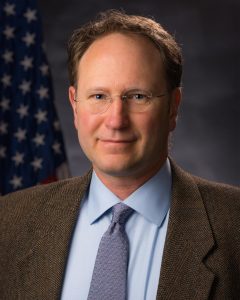
For even the most casual Great Lakes observer, it’s hard to ignore the drama playing out over federal funding in Washington.
Simply put, the Trump administration wants to turn off the federal money spigot that has funneled $300 million annually to the region for restoration projects. That’s all the way off, zero funding.
The Great Lakes community – environmental groups, the Great Lakes Commission, regional federal politicians and others reacted predictably – with outrage. No one likes it when the funding for their work would be abruptly halted.
Stalemate
The Trump administration has turned a deaf ear to protests about the budget cut. Advocates have responded by circling the wagons and are working all the angles trying to save the funding.
Is this just one more budget spat?
An example of Washington dysfunction that has characterized the federal government for a number of years? An issue that will be resolved by an ugly, late night compromise so both sides can declare victory?
Or is it something bigger, a turning point?
A seismic philosophical shift where the federal government washes its hands of environmental problems and turns them back to the states? Should restoring and protecting the Great Lakes be a national priority or regional responsibility?
2004
First, some background.
The federal program to restore the Great Lakes is now nine years old.
It has rolled seamlessly along managing to fly above the political frays in D.C. That’s because it’s about money and politicians universally love to bring money back to their districts and states.
That said, restoration programs have demonstrated some success and they feel like part of the fabric of environmental life in the region.
But some under the age of 30 working on issues related to the lakes probably don’t remember a time when restoration wasn’t an accepted norm.
The seeds for the current program were planted in the early 2000’s and it took a few years for them to sprout. And success wasn’t a given. It’s hard to get the federal government to give a region billions of dollars.
Then the dam broke. A turning point had been reached.
It was an executive order signed by President George W. Bush in 2004 that put Great Lakes restoration on the federal agenda.
The order began:

President George W. Bush signs a proclamation, courtesy of Eric Draper
“By the authority vested in me as President by the Constitution and the laws of the United States of America, and to help establish a regional collaboration of national significance for the Great Lakes, it is hereby ordered as follows.”
What followed said the Great Lakes are a “national treasure” and that the “federal government is committed” to making progress on the “challenges” the lakes face including “funding effective, coordinated and environmentally sound activities in the Great Lakes system.”
With the stroke of a presidential pen the Great Lakes became a national priority, at least on paper. The federal government took ownership along with state, tribal and local communities of the lakes recovery and betterment.
But there was a catch; a big one.

“Black Lagoon” Trenton channel, Detroit River, courtesy of EPA
Bush, the fiscally conservative Texan, never put money in his budget for the lakes except for a trickle here and there to show goodwill. A cleanup of the “Black Lagoon” in the Trenton channel of the Detroit River is an example. And congress wasn’t of a mind to write a big check to Rust Belt states.
The Great Lakes may have been declared a “national priority” but they weren’t a “national” funding priority for the federal government.
Then came a young senator from Illinois who lived a short walk from Lake Michigan on Chicago’s south side.
In 2008 candidate Barack Obama made a campaign pledge to fund the program Bush initiated and as president, Obama put $475 million in his 2010 budget proposal and it was approved by congress.

Cameron Davis Senior Advisor to the U.S. EPA Administrator, courtesy of EPA
President Obama’s Great Lakes overseer, Chicagoan Cameron Davis, quickly coined the phrase “a new standard of care” for the lakes to differentiate the past from the present and future. Projects like cleaning up toxic legacy sites designated in 1987 that would take decades to finish could finally begin.
Those 2004 and 2009 events were turning points for the Great Lakes. They marked the end of a long period of inertia and benign neglect.
Things change
Now comes the presidency of Donald Trump. The maverick real estate mogul and deal maker who, while a Republican, isn’t beholden to either political party. Unlike Obama, candidate Trump talked about the U.S. EPA with disdain and said he’d make the agency a shadow of itself.
With a stroke of his own presidential pen Trump has proposed zeroing out all funding for the Great Lakes.
No review of the program to continue what’s working and to get rid of what’s not, like the inevitable pet projects.
No wind down period to soften the impact. It’s the equivalent of a panic stop in your car where you slam on the brakes and go from 70 to zero in a few seconds. It’s a shock to the system.
And Trump wasn’t done.
While Great Lakes activists ranted about the proposed 2018 budget whacking, Trump announced that he wants to eliminate $50 million from the 2017 budget. He said he’ll use that money to help finance the infamous wall he wants to build between the U.S. and Mexico.
There’s more.
Trump wants to cut EPA staff by 25 per cent. That means the whole office in Chicago that administers Great Lakes programs would likely be eliminated.
Separate from money, Trump has directed agencies to start the process of dismantling Obama’s rules on clean water and clean air – the Waters of the United States and Clean Power Plan rules respectively.
Those moves attack the heart of prevention. It always costs less to prevent pollution than to clean it up later. Curiously, the Great Lakes activists lobbying for money haven’t had much to say about the rules rollback.
What now?
Michigan’s Jon Allan is in the center of the storm.
Michigan has the most to lose if federal funding for the Great Lakes goes to zero.
It has twelve of the toxic legacy sites still to be cleaned up. They’re officially designated Areas of Concern. Allan says the loss of federal funding “would cause a near total shut down of our GLRI-related work including work on restoration of the Areas of Concern across the state…”

Jon Allan,Director of the Office of the Great Lakes, courtesy of mi.gov
Allan heads Michigan’s Office of the Great Lakes and has championed cleanup of the legacy sites for years.
In a statement to Great Lakes Now Allan pointed out that restoration is about more than the environment.
“The program generates important ecological and economic returns to our communities, the states, the region and the nation” Allan said.
Note Allan’s reference to the benefits to the “nation.” He clearly believes the Great Lakes’ interest serves the national interest.
How does this end?
The Great Lakes community is making a full court press on the Great Lakes congressional delegation. They want congress to restore budget cuts as it has with minor ones in the past. And they may be successful. Bringing money back to the home folks is the life-blood of federal legislators.
But Sen. Rob Portman urges caution.
Last week the Ohio Republican told a group of Lake Erie advocates that “we have a fight on our hands. Frankly, it’s harder to restore funding if the administration zeroes it out.”
Powerful forces are working at cross purposes and the future of the Great Lakes hangs in the balance.
Whatever happens one thing is certain.
The Great Lakes are at another turning point.





